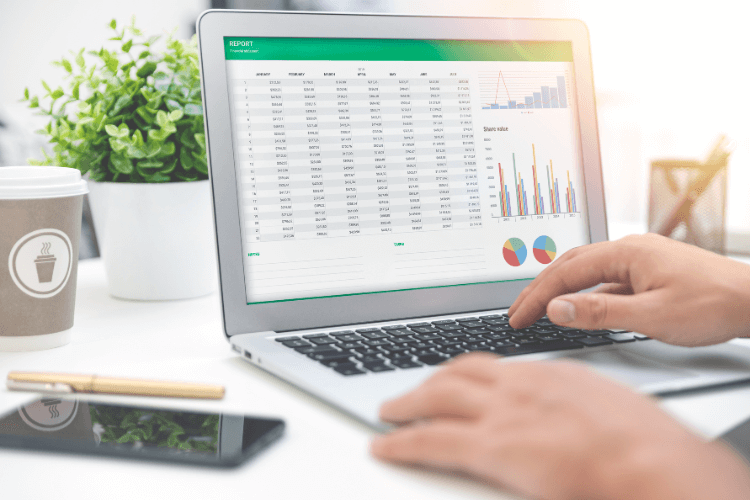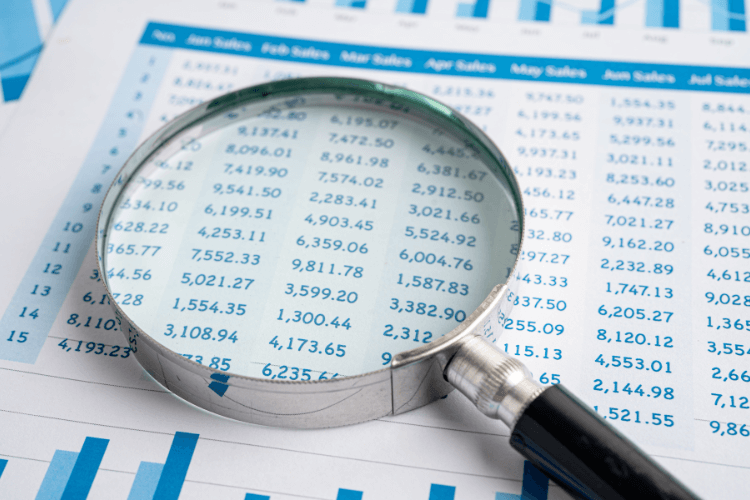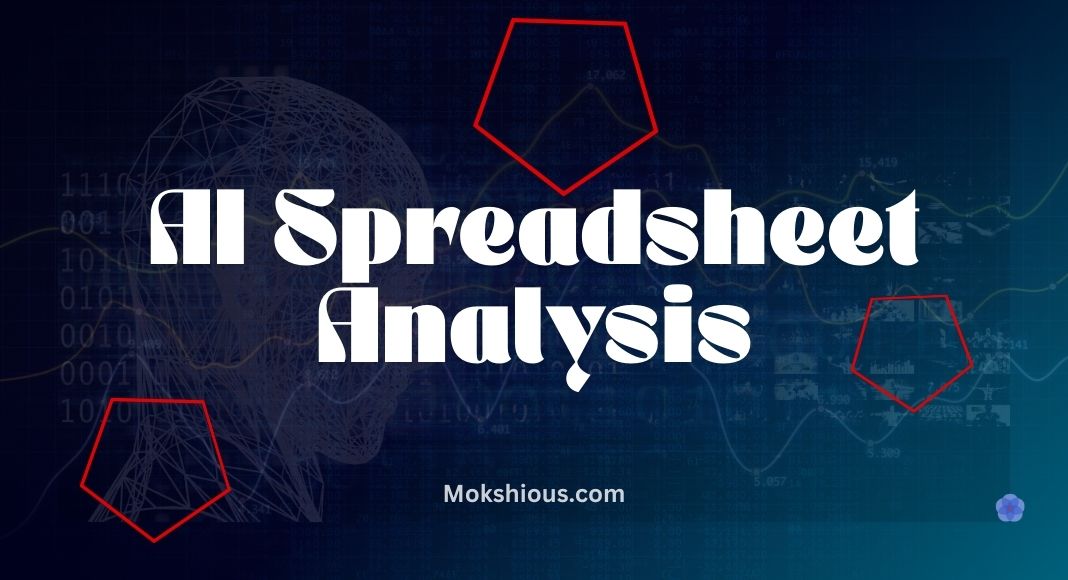Introduction: From Static Sheets to AI-Powered Data Analysis
If you’ve ever stared at endless rows of numbers in Excel or Google Sheets, you know the feeling; it’s like standing in front of a wall of noise. All that spreadsheet data is technically valuable, but digging insights out of it feels slow and painful. In the past, spreadsheet analysis usually meant pivot tables, formulas that break when you copy them down a row, and hours of trying to figure out what actually matters.
Now there’s a different way to work. With AI spreadsheet analysis, you can analyze your data up to 10x faster than the old manual methods. Think of it like having a data analyst sitting inside your spreadsheet interface, except this analyst answers in plain English when you ask questions.
Exporting campaign data doesn’t have to feel like punishment anymore. With AI-powered spreadsheet tools such as Gemini, Copilot, or even ChatGPT to analyze CSV, you can build personalized dashboards, spot creative fatigue, or run statistical analysis workflows without opening up a heavy BI system. The power of AI makes rows of spreadsheet data come alive with actionable insights from your data.
What Chatting With Your Spreadsheet Actually Means

AI spreadsheet analysis is ideal for you if you’ve ever wished that this spreadsheet would simply explain what’s happening. You can actually communicate with your spreadsheet rather than fumbling with formulas or creating pivot tables from scratch. You type in a simple question or upload a CSV into an AI tool, and within seconds, you get an analysis that feels like it came from a personal data analyst.
Natural Language Queries Over Raw Data
Before AI, running spreadsheet analysis meant learning formulas, setting up pivots, and double-checking every reference. For example, calculating ROAS in Excel required a custom formula, testing, and fixing until it worked. With AI-powered spreadsheet platforms like Google Sheets, Gemini, or Excel Copilot for data analysis, you skip all of that. You just ask questions like:
- “Show me campaigns with a CPA above my goal.”
- “Which ad sets saw a weekly drop in CTR of over 20 percent?”
- “Highlight rows that have no conversions and spend more than $500.”
These natural language queries give you answers instantly, no SQL, no complex formulas, and no need to be a statistics expert.
From Static Tables to Interactive Insights
Traditional spreadsheet interfaces are static: you paste in data, scroll, and maybe create a feed chart if you have the patience. But when you chat with data in Google Sheets or analyze Excel with Copilot, the spreadsheet turns interactive. You can surface patterns, detect creative fatigue with AI, and even test optimization scenarios on the fly.
And speed is the big win here. Marketers using AI tools report saving hours every week on manual reporting. That’s time they can use on strategy, creative ideas, and campaign testing instead. The gap between a traditional spreadsheet platform and an AI-powered spreadsheet is huge: one just shows numbers, the other explains what’s happening and how to improve it.
Blending AI With Familiar Tools
The best part? You don’t have to learn anything new. Gemini is already built into Google Sheets. Copilot lives inside Excel. ChatGPT analyzes CSVs and works directly with your export data. You’re still working in the same spreadsheet interface you already know, but now it comes with AI assistant features layered on top.
It’s like upgrading from a calculator to a spreadsheet with AI. Instead of only crunching numbers, the AI model can explain trends, propose formulas, and generate dashboards. That’s the shift from static reporting to advanced analysis.
Step 1: Set Up Your Campaign Data

Export Data From Major Ad Platforms
Start by exporting a marketing campaign spreadsheet template or pulling clean CSVs:
- Google Ads export to CSV (with spend, clicks, conversions, ROAS).
- Meta Ads exports a CSV that includes ad set details.
- TikTok Ads reporting export with CTR, CPC, and revenue.
This checklist makes sure your spreadsheet assistant has all the essentials for AI for spreadsheet analysis: impressions, CTR, CVR, CPA, spend pacing, and revenue.
Structure Your Spreadsheet With AI in Mind
Keep things clean and logical: Campaign → Ad Set → Ad → Metrics. Add consistent dates across rows. Remove sensitive or personal information before uploading to AI. The basis for precise insights from AI spreadsheet tools is a well-organized table.
Step 2: Pick Your AI Spreadsheet Surface

Google Sheets + Gemini
Gemini in Google Sheets works like a spreadsheet assistant. You can analyze your data in plain language, get formula field recommendations, and spin up personalized dashboards. Want a quick ROAS calculation?
Excel + Copilot
Excel Copilot turns a traditional spreadsheet into an AI-powered spreadsheet interface. It can analyze Excel tables, highlight trends, generate formulas, and point out optimization opportunities using advanced analysis tools.
ChatGPT With CSV Upload
If you want flexibility, ChatGPT can take your spreadsheet data, run statistical analysis, and return actionable insights from your data with prompts you write. It’s a great option for campaign optimization and AI for ROAS optimization workflows.
Step 3: Prompt Patterns That Work

Here are some proven AI for spreadsheet analysis prompts you can use right away:
- “List the top 5 campaigns driving 80 percent of conversions with CPA and ROAS.”
- “Detect creative fatigue with AI by flagging ad sets with CTR drop ≥20 percent and rising frequency.”
- “Propose a budget reallocation with AI by moving 15 percent of the spend from low ROAS to high ROAS campaigns.”
- “Run query mining with AI PPC data and suggest exact, phrase, and negatives.”
These prompts turn your sheet into a spreadsheet with AI that delivers data insights instantly.
Step 4: The 30-Minute Ask–Analyze–Act Loop

- Ask: Fire a plain-English query inside your sheet.
- Analyze: Let AI highlight rows, surface outliers, or suggest formulas, much faster with AI than with manual analysis tools.
- Act: Reallocate budgets, test new creatives, or log optimization decisions right in your spreadsheet platforms.
This loop makes spreadsheet data analysis roughly 10x faster than the way you’re used to doing it.
Step 5: Five Quick-Win Recipes

- CTR Drop Detective: Flag campaigns where CTR dropped by 20 percent or more and CPC went up. AI then suggests creative refresh themes.
- Budget Rebalance: Shift spend from low-performing campaigns to high-ROAS ones. AI shows a projected delta in return.
- Creative Fatigue Radar: Spot ads are showing rising frequency but falling CTR. AI recommends creative adjustments.
- Query Mining for PPC: Cluster search queries with AI, then add new exact or phrase matches and negatives.
- Time-of-Day Pacing: Use Excel hourly reports to see when conversions spike and have AI suggest bid adjustments.
Each of these quick wins makes your AI-powered spreadsheet workflow more practical, repeatable, and tuned for paid media success.
Step 6: Guardrails and Best Practices

- Strip personal data before uploading.
- Double-check AI outputs against a pivot table to confirm accuracy.
- Keep a changelog of all optimization decisions.
- Rerun advanced AI analysis weekly to catch new patterns.
Step 7: Level Up Your Workflow

Build Dashboards and Automations
Push your Google Sheets into Looker Studio with the official connector to build AI marketing dashboard workflows. Add Zapier automations so new rows trigger instant Slack alerts when performance shifts.
Scale Team Workflows
Instead of emailing around CSVs, share dashboards. Train your team to use a spreadsheet with AI prompts so everyone works smarter. Make AI for data analysis a standard part of both your free plan testing and your full-scale campaigns.
Conclusion: Use AI for Spreadsheet Analysis Like a Data Analyst
Old-school spreadsheet analysis feels painfully slow. With AI tools like Copilot, Gemini, and ChatGPT, you can analyze your data faster with AI, generate formulas, build dashboards, and uncover actionable insights from your data.
The real benefit of personalization here is simple: you’re not just crunching numbers, you’re building optimization strategies that actually move your campaigns forward. By giving your team the best AI to analyze Excel, ask natural language queries, and run advanced analysis inside spreadsheet platforms, you’re turning data into decisions faster than ever.
